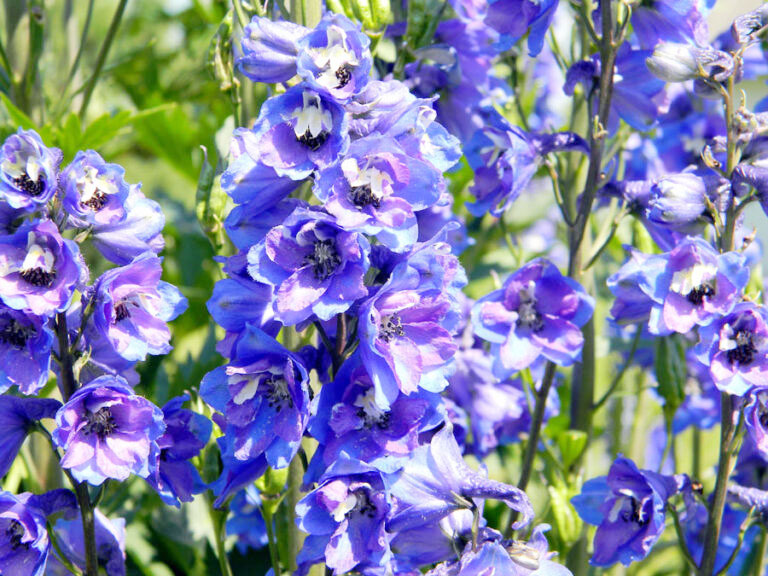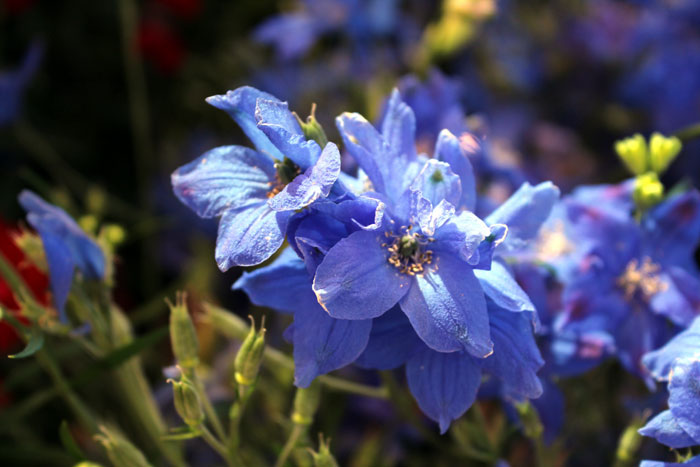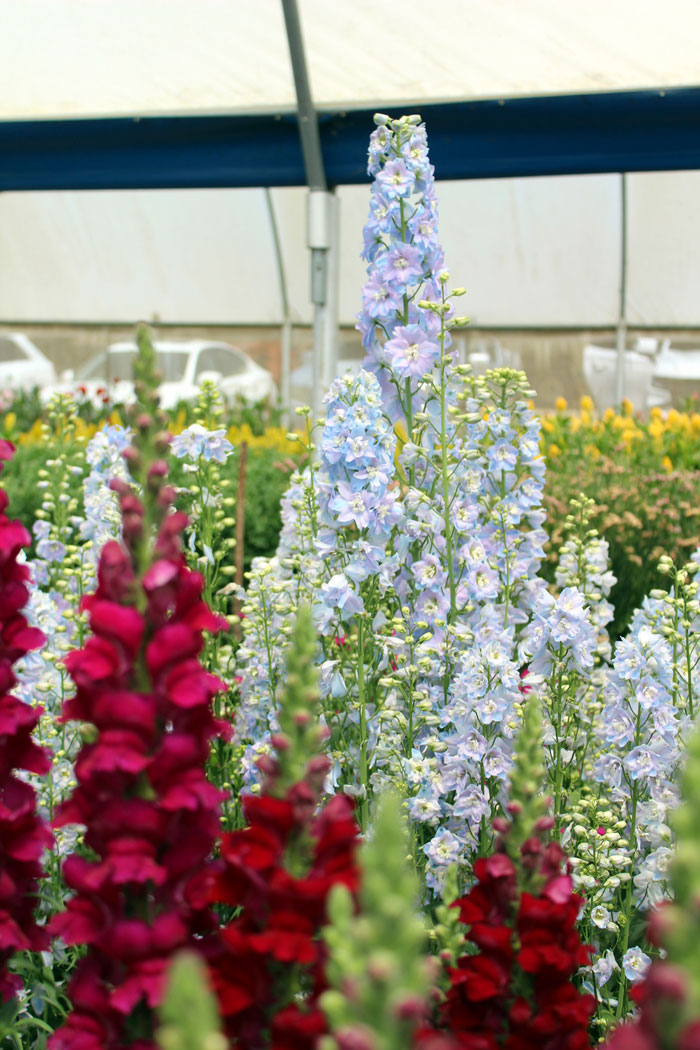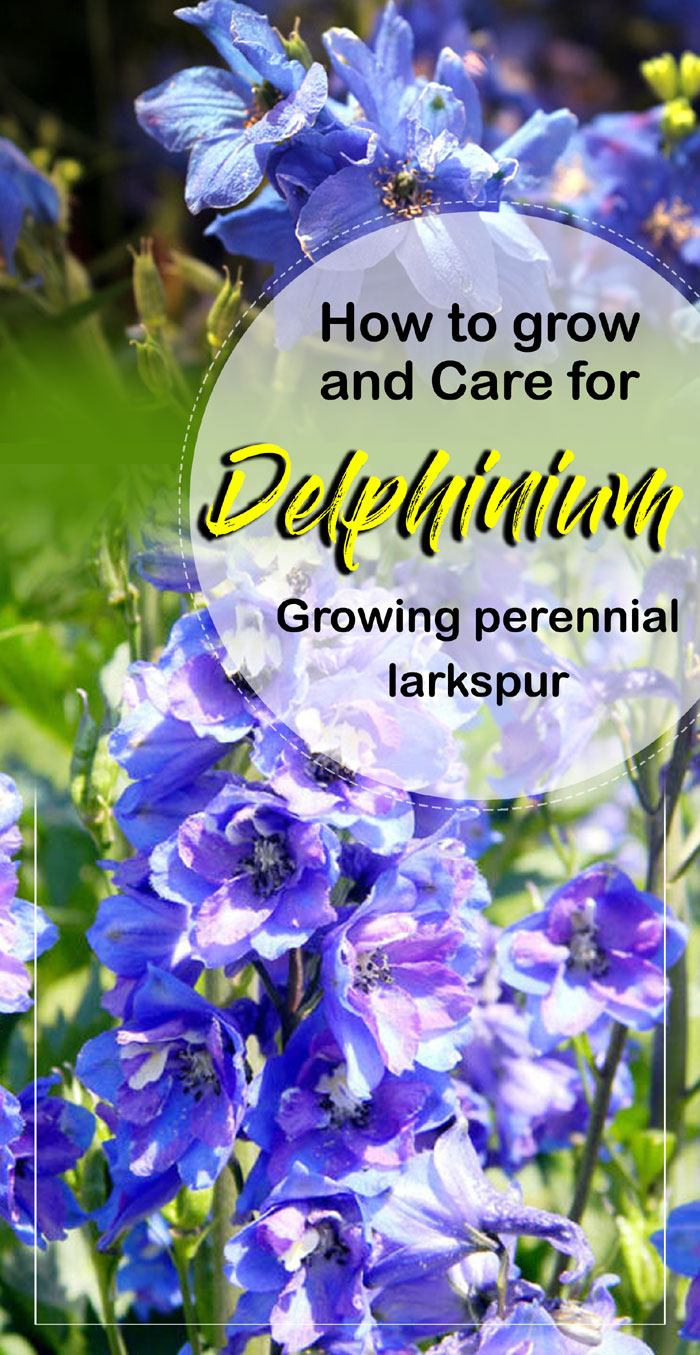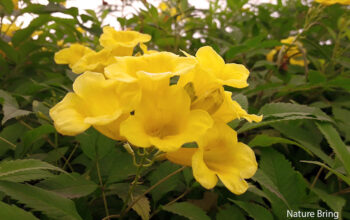Delphinium Plants (larkspur)
Delphinium plants (larkspur) are perennial flowering plants of the family Ranunculaceae, they are native to the tropical mountains of Africa and the Northern Hemisphere. With three to seven sharply pointed lobes and deeply lobed surfaces, its palmate leaves have three to seven toothed lobes. Flowering stems stand upright and are of varying sizes, ranging from 10 centimeters tall in alpine species to 2 m tall in meadow species. There are numerous flowers on this plant during the months of June and July (Northern Hemisphere). The colors of these flowers range from purple and blue, to red, yellow, and white. There are five sepals in each flower, which form a hollow pocket with a spur at the end, giving the flower its name, often dark blue.
Overview of larkspur
Scientific name Delphinium brunonianum
Common name Siberian larkspur, Chinese Delphinium, larkspur
Plant type flowering plant
Flower Color Purple, Pink, White, and Blue
Blooming time Summer
Sun required Full sun to partial shade
Soil well-drained , rich and fertile soil
Soil pH Alkaline
Zone 3-7
How to Grow and Care, Delphinium Plant
There are many delphiniums used as ornamental plants, commonly used in traditional and indigenous gardens. In addition to roses, lilies, and geraniums, these numerous hybrids and cultivars are typically grown as garden plants, providing height behind summer borders.
Larkspur like a frosty winter. The seeds of their plants need a period of freezing temperatures or low temperatures in winter to germinate. The stems of Delphiniums are hollow, so once those spikes of flower emerge, they can topple over easily. Plants should be protected from strong winds by being tucked into a protected spot. You should take this into consideration if you’re growing taller varieties that reach heights of up to 6 feet.
In order to keep delphiniums looking good, they require care. The roots need to be protected from slugs in spring, staked, fertilized, and kept in moist soil. It may be possible to reap the benefits of another flush of flowers in September if you cut them down to the ground after flowering.
Sunlight
You should grow delphiniums in a sunny place with consistent moisture in the soil. When growing delphiniums, they should be grown in full sun to partial shade. In warmer climates, they will need afternoon shade. Ideally, delphinium plants need six to eight hours of direct sunlight every day and prefer a morning or early afternoon sun. It is important to provide cool, moist shade for the roots.
Soil
Delphiniums prefer well-drained soil that is rich and fertile. For heavy soils, add grit to improve drainage and add well-rotted organic matter to planting holes to provide the necessary nutrients. Adding grit to the planting hole will help drain heavy soil if you have delphiniums that are prone to rotting in wet winter soil. The mulch keeps roots cool and retains moisture. Even though mulch helps maintain moisture in the soil, too much mulch can cause rot on the stems. The quality of soil plays a key role in the success or failure of finicky delphiniums.
Water
Delphiniums need regular watering, especially during the summer months when they are dry. Soil should never dry out or become soggy; it should remain just barely moist. Make sure to keep your plants well-watered during periods without rain, but not to allow them to stand in water. While delphiniums prefer moist conditions, standing water can rot roots and crowns. Keep the foliage dry by watering delphiniums from the base in order to prevent infection.
Pruning
New plants should be thinned to two to three good shoots when they are 3 inches high for best flowering. You can thin established plants to 5 to 7 shoots from the best ones. The main stalk should be cut after flowering at a level where the side shoots will bloom again a few days later with slightly smaller flowers. Cut the stems to the ground after flowering to encourage a second bloom, but a smaller one, in late summer or early autumn. After the plant wilts in autumn, cut it back to the ground.
Fertilizer
If you want to ensure the survival of your plants in the fall, feed them a couple of times during the summer before they start dying. Once you’ve planted your seeds, use slow-release fertilizer once, and then feed them with seaweed fertilizer to provide them with a boost. Fertilize every two to three weeks with a slow-release liquid fertilizer that has a balanced nutrient profile. You should avoid using fertilizers that contain a lot of nitrogen. Composted manure applied in the fall is helpful in supplying nourishment to these heavy feeders.
Read also:
Growin and care for Pansy flowers. 11 Best winter flowers for your garden. Growing and planting Fressia flowers. How to keep your indoor plants healthy. Agapanthus flowers growing and care tips. How to grow Kalanchoe in your home. Kochia plants growing and care guide. Petunia flowers growing guide. Coreopsis growing and care tips. soya plant growing and care tips. When and how to grow Wisteria plants. Yucca plants growing, planting, and care.
For pin:

